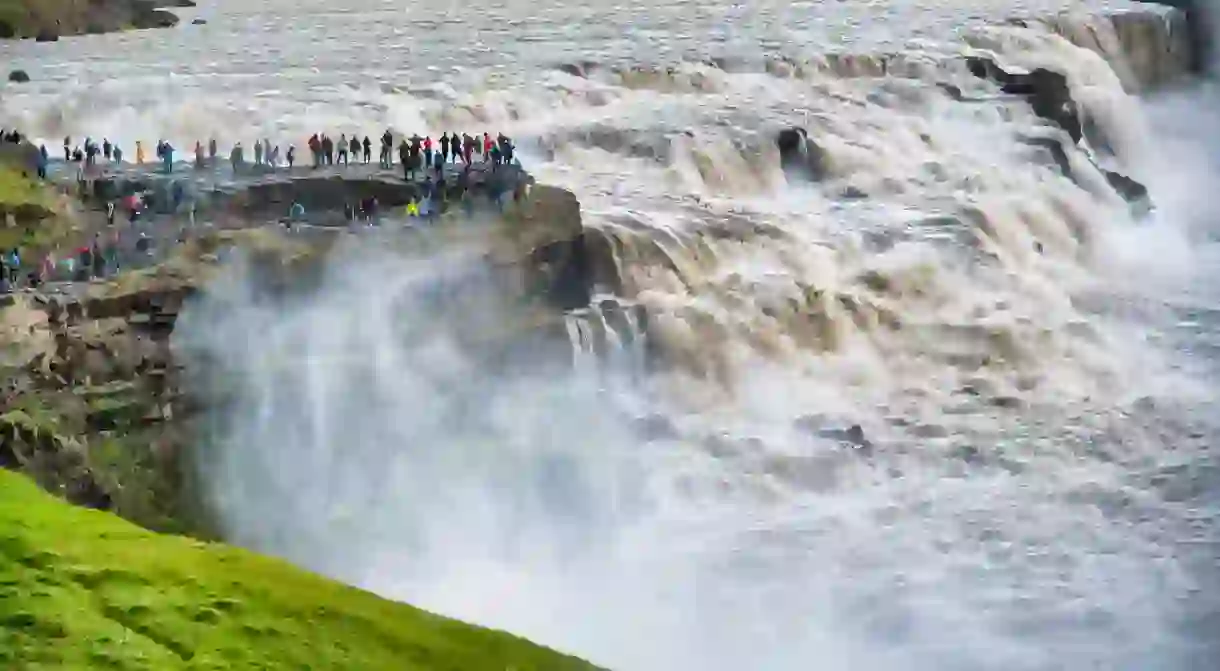The Most Amazing Waterfalls in Iceland You Can Visit

Encompassing mighty torrents, double rainbows and Norse folklore, Iceland contains a deluge of unmissable waterfalls – or fossar. You can walk right up to most and even visit a few on the same day; some are perfectly placed for a day trip from Reykjavik. Here are the most fascinating waterfalls in the Land of Fire and Ice.
Book onto Culture Trip’s five-day, small-group Iceland tour and experience the magic of the country’s waterfalls, landscapes and more for yourself.
Svartifoss
Natural Feature

Svartifoss (Black Fall in English) sits in Skaftafell National Park at the end of a 1mi (1.6km) hike. The waterfall itself is surrounded by black basalt columns: if you’ve been to the Hallgrimskirkja in Reykjavik the fall may remind you of it as stone pillars like these provided inspiration for the church.
Gullfoss
Natural Feature

Gullfoss (Golden Fall) is probably the best-known waterfall in Iceland, its sheer size and power drawing plenty of visitors – get there early in the morning to enjoy it in peace. It’s in the Golden Circle, near the Great Geysir, so make a day trip from Reykjavik and combine the two. The water plummets down 105ft (32m) in two stages into a rugged canyon, 230ft (70m) deep. Visit on a sunny day and you’ll probably see a rainbow.
Faxi (Vatnsleysufoss)
Natural Feature

The Faxi waterfall is only 12km (7.5mi) from the Great Geysir, but less visited than Gullfoss – making it pleasantly quiet. Its other name, Vatnselysufoss, means Waterless Fall – although, at 262ft (80m) wide and 23ft (7m) high, there’s no shortage here. It’s also a hotspot for salmon fishing, so if you want a more intimate experience with Icelandic waterfalls, lay down a rod.
Seljalandsfoss
Natural Feature

The Seljalandsfoss, in the Southern Region, is about 90 minutes from Reykjavik. You can walk behind the fall into a cave and enjoy the incredible view from there. The water drops 197ft (60m) and is a part of the river Seljalandsá – which has its origin in the ice caps of Eyjafjallajokull. Head there in summer for a picnic, when the fall is surrounded by wildflowers.
Skógafoss
Natural Feature

Not far from Seljalandsfoss is Skogafoss – in the village of Skógar – along the Southern Ring Road. It is said that Þrasi Þórólfsson, the first Viking settler in the area, buried his chest of gold under the waterfall. Due to the spray the 200ft (60m) high fall produces, a single or double rainbow is normally visible.
Godafoss
Natural Feature

Godafoss, in the northeast of Iceland, is one of the most fascinating waterfalls in the country. Even though it’s not that high – at only 39ft (12m) – it more than makes up for the deficit with its 98ft (30m) width. Legend has it that in the late 10th century, Thorgeir Ljósvetningagodi – a law speaker – threw his statues of the Norse Gods into the waterfall after he decided in favour of Christianity as the official religion of Iceland.
Barnafoss
Natural Feature

The fame of Barnafoss was born in tragedy – folklore tells that two children fell to their deaths from a stone bridge that used to cross it. Their grieving mother is said to have put a curse on this bridge: anyone who dared to cross it would meet the same fate as her sons. The crossing and its curse were later consumed by an earthquake, but the name, Children’s Falls, immortalises the tragic tale. You’ll find Barnafoss in west Iceland, 126km (78mi) from Reykjavik.
Hraunfossar
Natural Feature

A neighbour of Barnafoss, this series of falls cascade from the basalt ledges of a lava field on the fringes of the Icelandic Highlands. Named Lava Falls for this reason, their formation was caused by an eruption beneath the nearby glacier, Langjökull. The constant volcanic activity here has created a multitude of hidden caves nearby, including the country’s longest, Víðgelmir – which is 5,200ft (1,595m) long. According to folklore, these lava tubes were once home to trolls.
Chloe Thrussell contributed additional reporting to this article.













